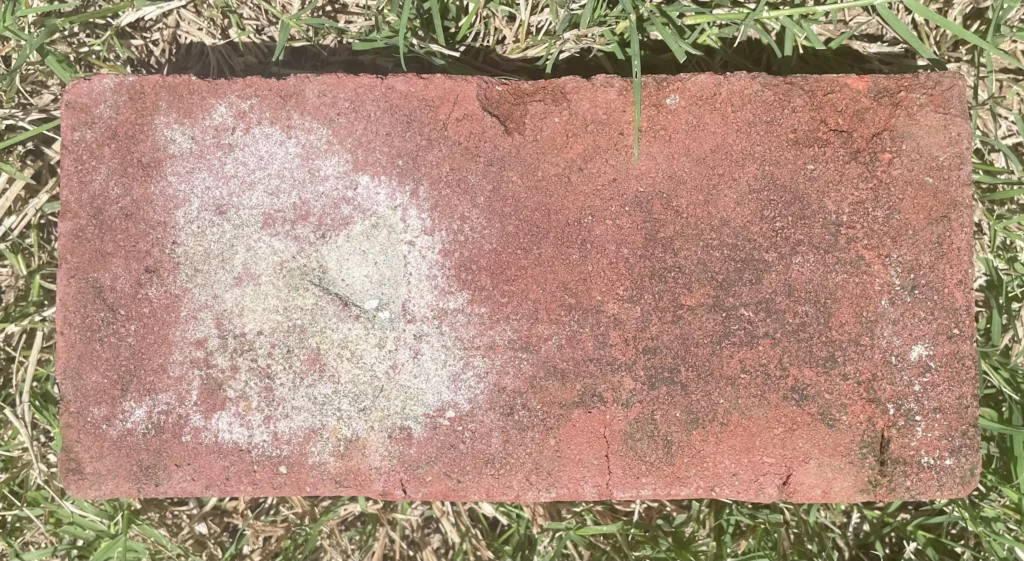Thanks to the drought, the pond had finally dried enough to dig it out a little more. While working, something red and rough caught the light — a single Thurber brick, half-buried and sunbaked, still holding tight to the Texas earth more than a century after it was fired.
At first glance, it’s just a piece of brick. But stamped plainly in the clay there was a triangle. And that one symbol opens a door to a forgotten Texas town, a vanished industry, and a chapter of history most folks have never heard.
What Is a Thurber Brick?
Thurber, Texas, located just off I-20 between Fort Worth and Abilene, was once one of the largest company towns in the state. In the late 1800s and early 1900s, it boomed with over 10,000 residents — mostly immigrant laborers working in coal mines and the Thurber Brick Plant, which supplied bricks across the state and beyond.
The Thurber Brick Plant, operated by the Texas and Pacific Coal Company, produced millions of bricks between 1897 and 1930. You’ll find their signature stamped bricks in places like the Fort Worth Stockyards, the Galveston Seawall, and streets across Texas — and every now and then on the Ranch too.
Dating a Thurber Brick: General Timeline
Period Characteristics
1888–1903 No union mark, rougher molds, limited stamping
1903–1920 Triangle union mark (Brickmakers Union Local Number 153), higher volume
1920–1937 More uniformity, smoother surface, decorative styles increase
Post-1937 Thurber plant closed. Any bricks after this date are likely reused or salvaged.
How Did It Get Here?
That’s the real mystery. The Ranch sits miles away from Thurber, and yet here lies a brick, weathered but intact — a small artifact of industrial might out in cattle country.
It may have been used for:
A ranch house chimney
A smokehouse or fire pit
A water well cap
Back then, when something was built, it was built to last — and that often meant Thurber brick.
A Piece of Texas You Can Hold
Finding a Thurber brick is like shaking hands with the past. It’s the kind of object that reminds you that even remote places like the Tounget Ranch are woven into the greater story of Texas — not just cattle and cedar, but coal, fire, sweat, and industry.
So next time you’re walking fence line or clearing brush, keep an eye out. The land holds onto stories, and every so often, it sets one out in plain sight.

